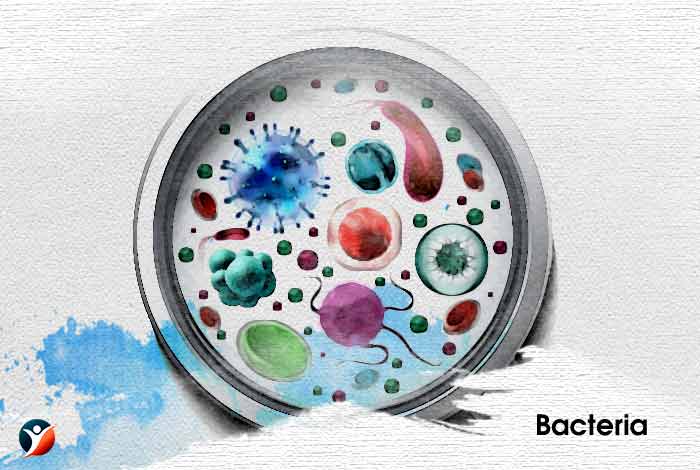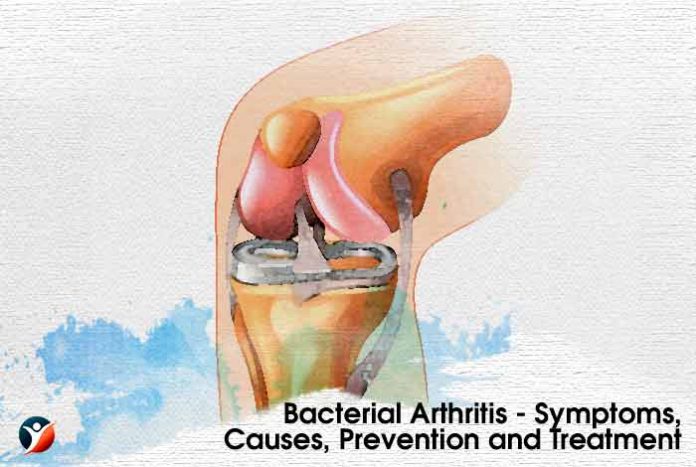
Table of Contents
- Overview and Statistical Facts
- Types and Symptoms
- Risk Factors
- Do I Have it?
- Causes and Prevention
- Treatment and Care
- Any OTC or Self-Management Methods Available
- Natural Ways to Cure
- Health Tip by Expert
Overview and Statistical Facts
Bacterial arthritis is a painful infection occurring in a joint. The infection can be caught from the different bacteria that travel across your bloodstream from different parts of the body. It can also occur when you suffer a penetrating injury, which delivers the bacteria directly to your joint.
Older adults and infants are at a higher risk of developing bacterial arthritis. The most commonly affected joint are the knees, it is also seen to affect shoulders, hips and other joints. The infection is known to spread quickly and can be harmful for the cartilage and bone in the joint. Therefore, if bacterial arthritis is suspected, prompt treatment is extremely necessary.
Bacterial arthritis can occur at any age. In children, those who are below the age of 3 years are more susceptible to developing bacterial arthritis. In these children, knees, hips and ankles are most commonly affected.
From ages 3 till adolescence, bacterial arthritis is not commonly seen. The incidence of this disease increases again in adults as they become sexually active and are at a greater risk of getting exposed to a variety of sexually transmitted bacterial infections. [1]
Bacterial arthritis is also seen in immunocompromised people and those who have chronic inflammatory arthritis like rheumatoid arthritis.
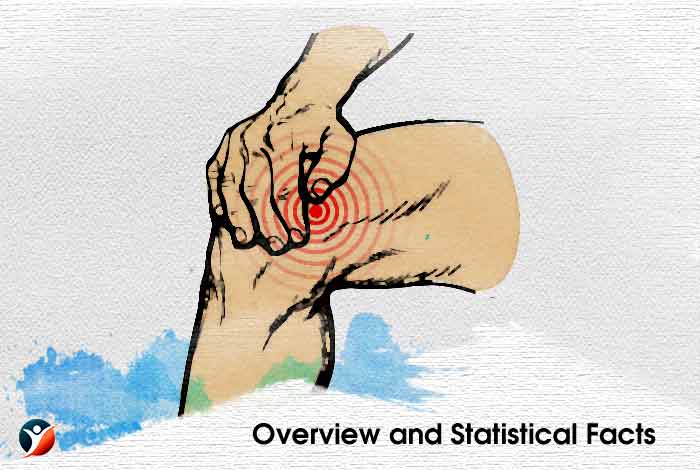
Symptoms of Bacterial Arthritis
Bacterial arthritis is a typically discomfortable condition in which it becomes extremely difficult to use the affected joint properly. Some of the symptoms of bacterial arthritis are as follows:
- Fever
- Chills
- Trouble moving the infected joint
- Cysts (fluid-filled pockets) in the joint
- Painful, red, swollen, stiff, or warm joint
- Fatigue or unusual tiredness
- Irritability, or crying when the joint is moved (children younger than 3 years)
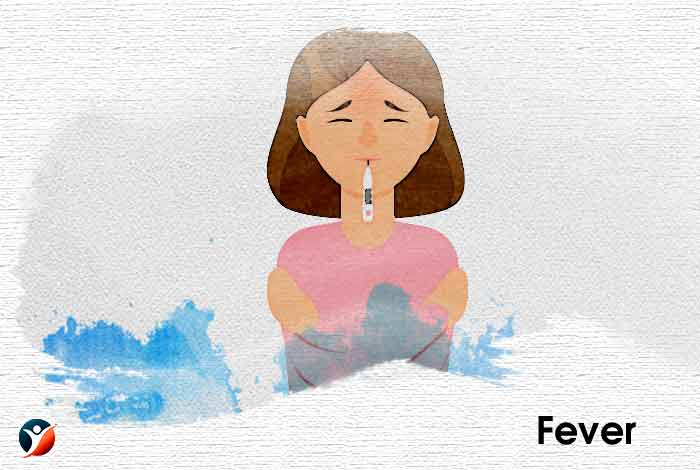

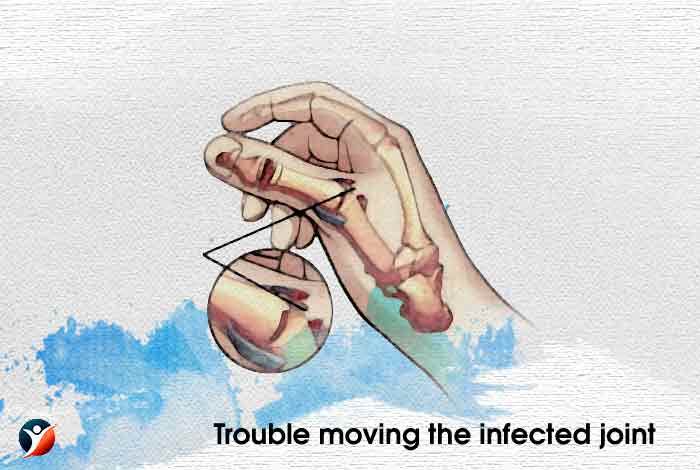
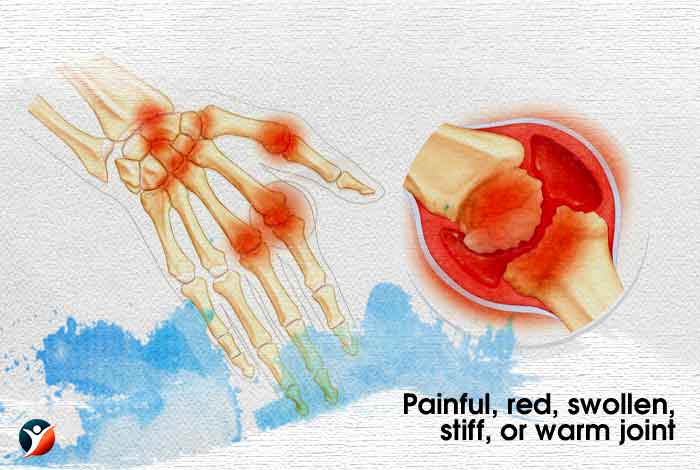
Risk Factors of Bacterial Arthritis
Some of the factors that increase your chances of chances of developing bacterial arthritis are as follows:
- Existing joint problems
Chronic conditions and diseases affecting your joints — like gout, osteoarthritis, lupus or rheumatoid arthritis — can escalate your chances of developing bacterial arthritis. Having a previous joint surgery, an artificial joint and joint injury can also increase your chances of getting the disease.
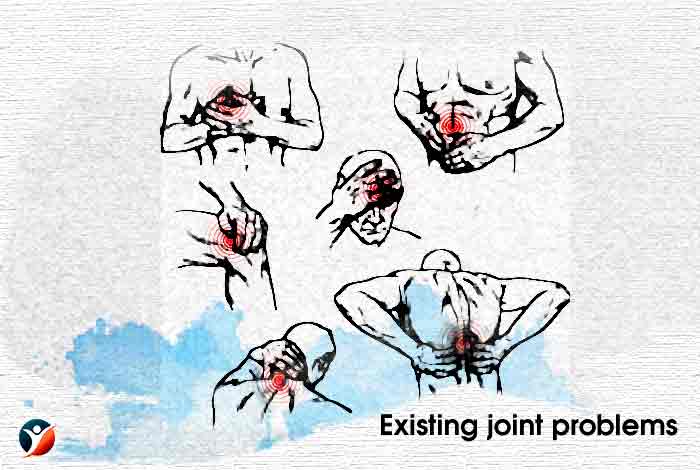
- Taking medications for rheumatoid arthritis
People who have rheumatoid arthritis are at a higher risk of developing this condition because the medicines that are given suppress the immune system, thereby making it easier for the person to catch an infection. It is difficult to diagnose bacterial arthritis in people with rheumatic arthritis as the symptoms are similar in both cases
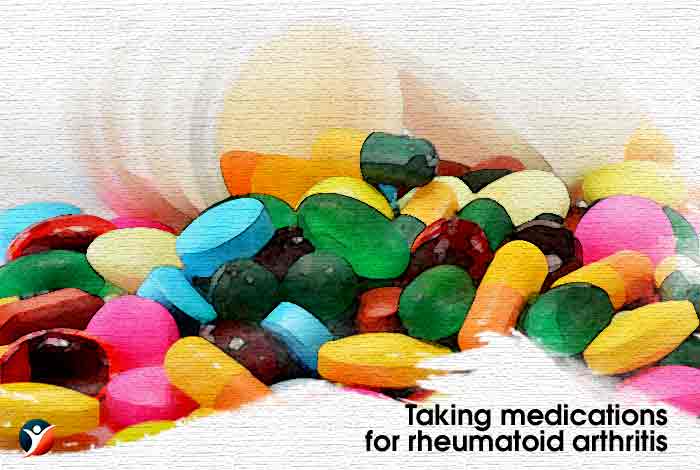
- Skin fragility
Skin that is susceptible to breaking and heals poorly can expose our body to bacteria. Skin conditions such as eczema and psoriasis can further escalate your risk of developing bacterial arthritis, just like infected skin wounds. People who regularly abuse injectable drugs too are at a higher risk of developing the infection at the site of injection.
- Weak immune system
People who have a weak immune system are at a higher risk of bacterial arthritis. This includes people with kidney and liver disease, diabetes and those who take drugs to suppress their immune systems.
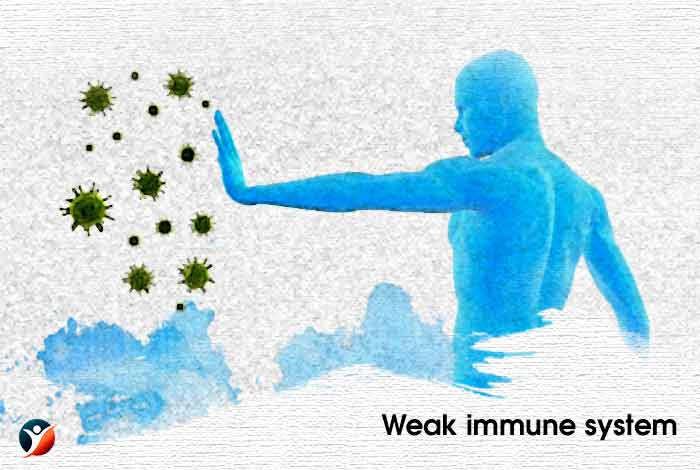
- Joint trauma
Animal bites, cuts over a joint or puncture wounds can put you at risk of bacterial arthritis.
- Medicines that have an effect on your immune system, including steroid medicines are prescribed under following conditions:
- An immune deficiency disorder, such as AIDS
- IV drug use, or alcoholism
- An artificial joint in your knee or hip
- Joint disease, injury, or surgery
- Liver failure, or dialysis for kidney failure
- A medical condition such as diabetes, sickle cell disease, or cancer
- An open wound that may allow bacteria to enter the bloodstream
- A bacterial infection, such as strep throat
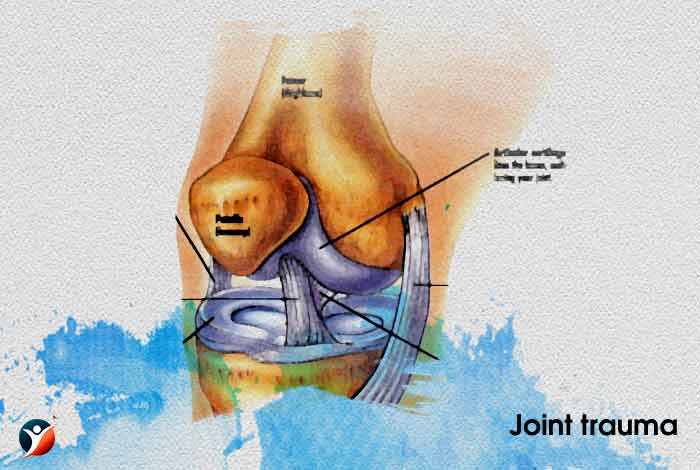
Do I Have Bacterial Arthritis?
If you are experiencing pain or swelling in your joints you need to see a doctor about it and find out what is troubling you. Swelling and pain in joints can be due to variety of reasons. And If you experience joint pains, fever, chills, difficulty in moving your joints or any other similar symptoms, make sure you visit a doctor as soon as possible and get yourself checked to rule out bacterial arthritis.
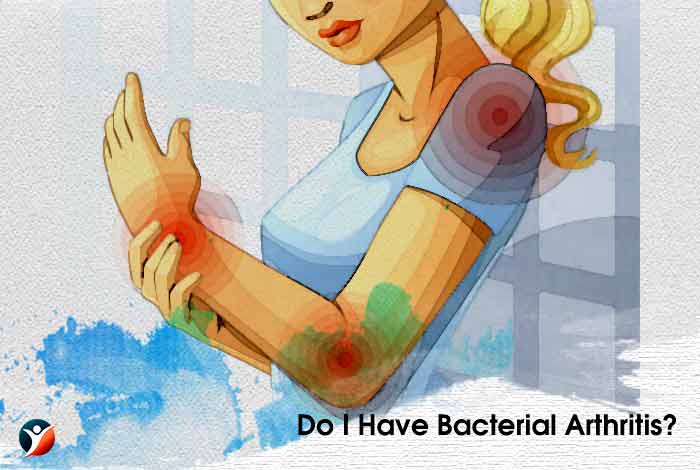
Causes and Prevention of Bacterial Arthritis
Bacterial arthritis is most commonly caused due to infection from Staphylococcus aureus (staph), which is commonly found living on healthy human skin. Bacterial arthritis develops when there is a urinary tract infection or skin infection such that the infection spreads to the joints through the bloodstream. Rarely, a drug injection, a puncture wound, or surgery in or around joint can give an entry to the bacteria and cause infection. Joints have a lining called synovium that has a little ability to protect itself from infection. When there is an infection, the body responds to it by causing inflammation. This puts an extra pressure on the joint and decrease the blood flow to the joint area. This can result in joint damage.
The bacteria can enter the body in a variety of ways. Some of the most common routes of entry are as follows:
- infection that spreads from another source inside the body, like ear infections
- infected wounds
- open fractures, or bones that penetrate through the skin
- foreign object penetrating the skin
- trauma
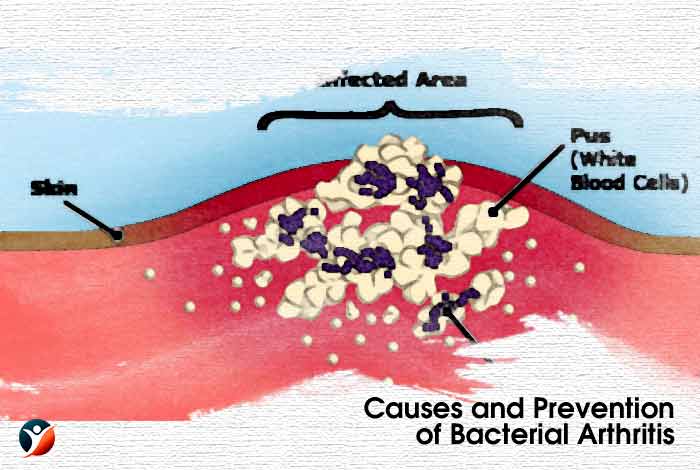
Prevention
-
Prosthetic Joints
If you have had a prosthetic joint replacement, you are at a higher risk of developing bacterial arthritis. Some of the ways by which you can protect yourself are as follows:
- Make sure you inform your dentist and doctor about your joint before starting any kind of procedure.
- Educate yourself about the signs and symptoms of bacterial arthritis and seek immediate medical attention if you experience swelling, pain, warmth or redness in your joints.
-
Preventing Infectious Arthritis: Immune System Disorders
If you have a chronic condition like HIV, AIDS or diabetes or you have been taking steroids regularly, then your immune system will become compromised and increase your chances of developing the disease. Take these steps to keep yourself protected from bacterial arthritis:
- Ask your doctor whether you should take antibiotics in order to prevent infections before undergoing any invasive procedures.
- Regularly check your skin and joints for signs of infection. Diabetic people should pay extra attention to their feet and look out for cuts and sores that might lead to infection.
- If you observe that a sore is taking a lot of time to heal, make sure you talk to your doctor about the same.
-
Other Risk Factors
- Travel
Animals, insects, ticks and spiders can cause bacterial arthritis when they bite. Therefore, while you are traveling, make sure you are not exposed to these pests. Before going on a trip explore which wildlife you might encounter in that area.
- Injection drug use
Injecting drugs intravenously can increase your chances of getting exposed to bacteria which can lead to bacterial arthritis. Regular injection drug users can even develop life threatening joint infections on being repeatedly getting exposed to foreign bacteria.
- Other infections
Sometimes, bacterial arthritis can develop when a person gets infected with some other bacteria. And develops conditions like bacterial meningitis and bacteremia. If you have recently developed an infection and then you are experiencing swelling or joint pain, talk to your doctor as soon as possible.
- Practice safe sex
In some cases, bacterial arthritis can develop after getting exposed to a sexually transmitted infection like chlamydia or gonorrhea. Therefore, practice safe sex and use barrier contraceptive method like latex condoms. for preventing infections.
- Seek treatment for alcoholism and drug abuse
Alcoholism or drug abuse can make a person more likely to indulge in risky behaviors such as unsafe sex that makes them more susceptible to bacterial arthritis.
Diagnosis and Tests
The following tests help in diagnosing bacterial arthritis:
- Joint fluid analysis
Infections can alter the consistency, color, volume and makeup of the fluid that are found in your joints. A sample of this fluid can be withdrawn from your affected joint using a needle. This test will help in determining which bacteria are causing the infection, which will help your doctor to determine which medicines to determine.
- Blood tests
Blood tests are done to determine the signs of infection in the body.
- Imaging tests
Imaging tests like X rays are done in order to determine how much damage the disease has done to the joint.
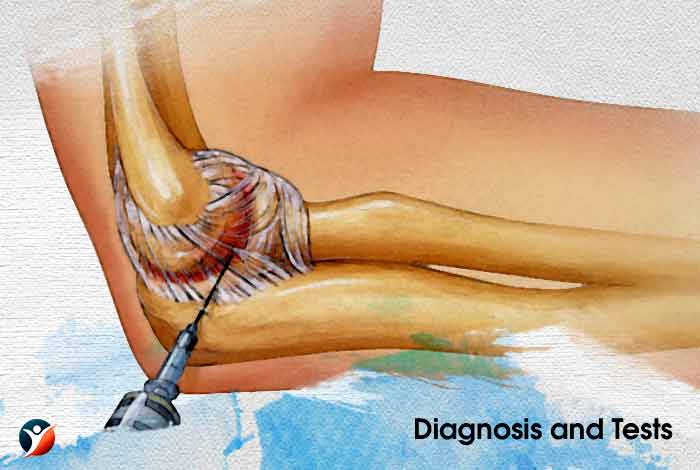
Treatment and Care
Doctors trust the antibiotic drugs and joint drainage for treating bacterial arthritis.
1. Joint drainage
It is important to remove the infected joint fluid for treating the disease effectively. Some of the drainage methods include:
- Needle
The infected joint fluid is withdrawn with the help of a needle that is inserted into joint.
- Scope procedure
In arthroscopy, a small incision is made in the joint through which a flexible tube with a video camera at its tip is introduced into the joint. After this, a little suction and drainage tubes are inserted through which the infected fluid is drained.
- Open surgery
An open surgery is suggested when it is difficult to withdraw joint fluid like from hips.
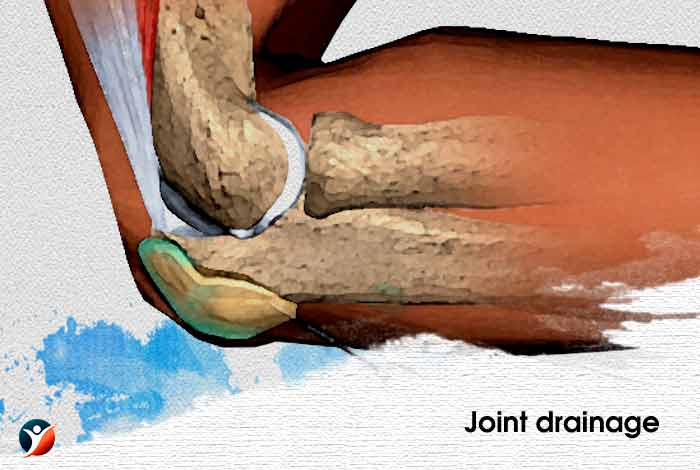
2. Antibiotics
In order to pick up the most effective antibiotics, your doctor will test the synovial fluid and prescribe antibiotics accordingly. Antibiotics are usually administered intravenously and later might be switched to oral tablets.
In most of the cases, the treatment lasts for 2 to 6 weeks. There are some side effects associated with antibiotics like vomiting, nausea, diarrhea and allergic reactions in some cases.
Care for Bacterial Arthritis
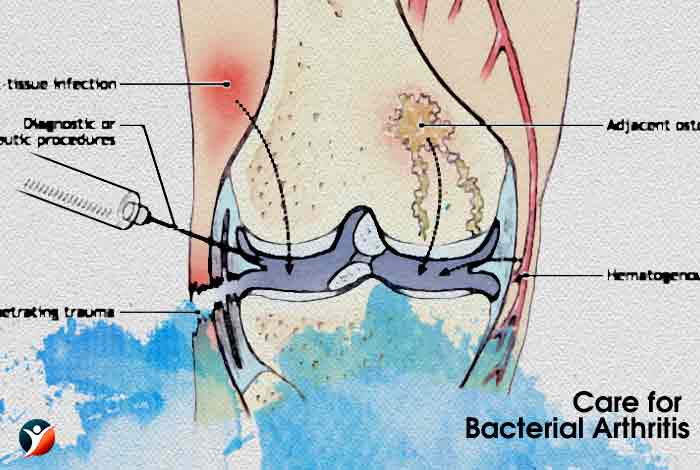
1. Rest your painful joint as directed
Your doctor will advise you to rest your painful joint. It is important you follow his instructions completely so as to avoid more damage.
2. Elevate the joint to reduce swelling and pain
Try to keep your joint above your heart as long as possible for as many times as feasible.
3. Apply ice to the joint to reduce swelling and pain
Ice is very helpful in preventing tissue damage. Put crushed ice or a cold compress over your affected joint for 15 to 20 minutes every hour or as directed by your doctor.
4. Exercise as directed
Ask your doctor about the exercise routine that you can follow in order to manage your inflammation, keep your joints flexible and reduce pain.
Any OTC or Self-Management Methods Available
If you suspect you have some joint problem and the pain is becoming unbearable for you, you can take some NSAIDs that are available over the counter, like aspirin and ibuprofen as they help in bringing down the inflammation and manage the pain. However, you must also know that these medicines too have side effects and should not be taken without caution. If you are on blood thinning medicines, make sure you consult your physician before taking these medicines.
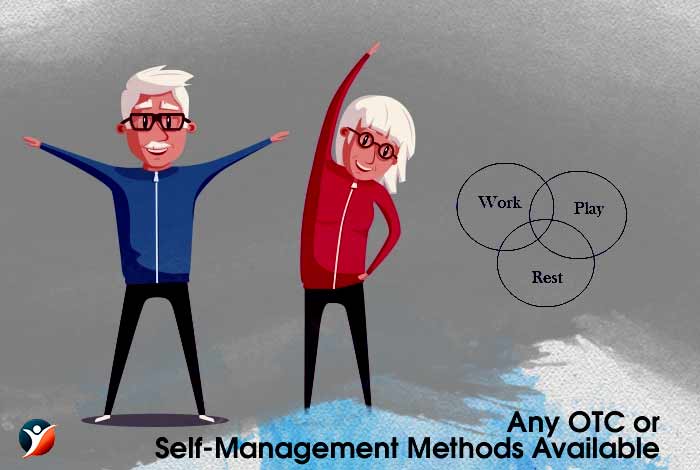
Self-Management Methods Available
Here are some of the ways by which you can manage your disease effectively at home:
1. Be organized
Keep a track of your pain levels, symptoms, medicines and their possible side effects. Work with your doctor to determine what works best for you.
2. Manage pain and fatigue
It is common that the pain and fatigue become overwhelming for you. Therefore, you can make use of some non-medicinal pain management methods to keep your pain in check. The stress of living on a daily basis with pain can make you feel fatigued. For this, you can make use of natural therapies to ease out the pain as well as the stress.
3. Stay active
Even though exercise might seem as the last thing you want to do when you are in pain, it is actually helpful in managing your arthritis and is good for your overall health. It helps in strengthening your muscle that provides support to your painful joints. It takes away stress, prevents insomnia, improves mood and overall makes you feel good.
4. Balance activity with rest
It is important to rest when your joints are painful and the disease is in the active phase. Therefore, it would really help if you could lighten your schedule and ask for help whenever you require. Try to conserve your energy
5. Eat a healthy balanced diet
When a healthy diet is combined with exercise, it can help in achieving and maintaining healthy weight. Also, try to include foods that have anti-inflammatory properties that will help in controlling inflammation.
6. Improve Sleep
You can worsen your arthritis pain and fatigue by having poor sleep habits. Include proper sleep hygiene practice and go to sleep at fixed times.
Natural Ways to Cure
Following are some of the natural ways through which bacterial arthritis can be managed effectively:

1. Lose weight
Excessive weight can put pressure on your joints and elevate your pain, especially on your hips, knees and feet. Therefore, it is important that you keep your weight in check. By reducing weight, you will improve your mobility, reduce pain and prevent further damage to your joints.
2. Get more exercise
Exercise has more benefits to the patient than keeping your weight in control. If you do weight bearing exercise like running or walking, it can damage the joints. Just regular movements help in maintaining flexibility. You can also try low impact exercises like swimming and water aerobics.
3. Use hot and cold therapy
A world of difference can be made by using simple hot and cold treatments. You can go for long, warm baths or showers, especially in the morning. It will help in easing the stiffness in your joints. You can also use a moist heating pad or electric blanket at night for keeping joints warm. Joint pains, inflammation and swelling can be best relieved by using cold treatments. For this you can make use of gel ice pack or a bag of frozen vegetables and wrap it around painful joints for instant relief.
4. Try acupuncture
A Chinese form of medical treatment that can do wonders for your joint pain is acupuncture. It involves inserting thin needles at specific points of the body. This helps in rerouting energies and restoring balance in the body. Even the World Health Organization has extensively researched acupuncture and recommends it as a complementary therapy for over 100 different conditions.
It is believed that acupuncture can play an important role in decreasing arthritis pain.
5. Include the right fatty acids in your diet
Including omega 3 fatty acids in your diet will help you in keeping your arthritis in check. Fish oil supplements help in reducing joint pain and stiffness. Gamma linolenic acid or GLA is also found to be helpful in bringing down the symptoms of arthritis. It is found in seeds of certain plants such as borage, evening primrose, black currants or hemp. However, consult your doctor before starting this treatment.
6. Add turmeric to dishes
The yellow spice, turmeric, commonly found in Indian dishes, is known to contain a chemical known as curcumin which might help in reducing arthritis pain as it has anti-inflammatory properties.
As per NIH, when turmeric was given to lab rats, it was observed that their inflammation got reduced.
7. Get a massage
As per the Arthritis Foundation, if you regularly massage your arthritic joints, you can reduce stiffness and pain and improve your range of motion. You can work with a physical therapist for learning self-massage, or you can schedule regular appointments with a massage therapist.
8. Consider herbal supplements
There are several herbal supplements available in the market that help in managing joint pain. Some of the herbs that can be used are as follows:
- Boswellia
- Ginkgo
- Bromelain
- Devil’s claw
- Stinging nettle
- Thunder god vine
Since herbal supplements are not regulated by the U.S. FDA, therefore, consult a doctor before starting these therapies. Also, make sure that you buy these from a reputable source.
Health Tip by Expert
Painful joints due to bacterial arthritis can be managed by different treatment methods. But, it should not put a brake on your zeal of living life.

